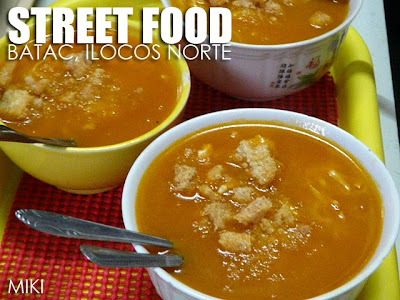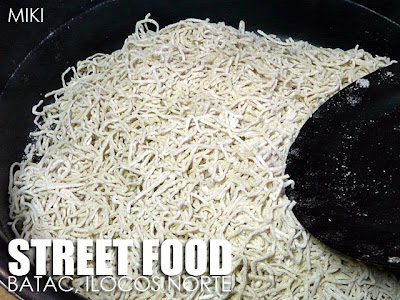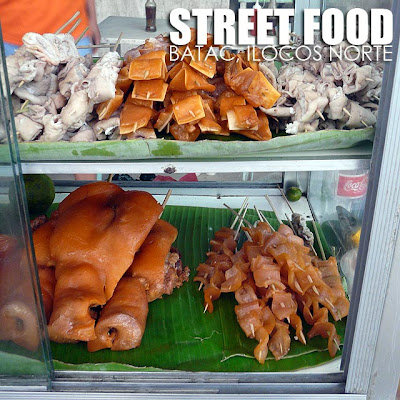 A trip to Ilocos Norte would not be complete without a food trip in Batac, the home of the Ilocos Norte version of the empanada.
A trip to Ilocos Norte would not be complete without a food trip in Batac, the home of the Ilocos Norte version of the empanada.The Batac empanada has a lot of variations. There's the ordinary empanada (just the papaya, bean sprouts and egg), ordinary eggless (just the vegetables), special empanada (with longganisa and egg), special eggless (with longganisa but no egg), special w/o mongo (everything except bean sprouts), jumbo empanada (with hot dog), double special (double longganisa and one egg), double egg (one longganisa and two eggs), and the heaviest of them all, the double double (double the longganisa and egg). They even serve just the crust which they call pinais. For more on the Batac empanada, read Ilocos empanada! Dissecting the Batac and Vigan empanada.
 But there's more to Batac than just the empanada. In the empanda stores, they also serve longganisa, kudil (fried pork skin), isaw (fried chicken intestines), pusit (fried dried squid), balut and kwek-kwek among others. It's basically fried stuff! Talk about cholesterol and uric acid high!
But there's more to Batac than just the empanada. In the empanda stores, they also serve longganisa, kudil (fried pork skin), isaw (fried chicken intestines), pusit (fried dried squid), balut and kwek-kwek among others. It's basically fried stuff! Talk about cholesterol and uric acid high!
 But across the street is another treat. Batac is also known for its miki (noodle soup) which they serve for Php20 for the plain miki or Php25 if you want a hard-boiled egg in it. The noodles are freshly made and you can see it still has its flour coat when its dropped in boiling water.
But across the street is another treat. Batac is also known for its miki (noodle soup) which they serve for Php20 for the plain miki or Php25 if you want a hard-boiled egg in it. The noodles are freshly made and you can see it still has its flour coat when its dropped in boiling water.
 In another store, they served grilled pig parts. There was pig snout, ears, tongue, intestines, pork sausage (longganisa) among others.
In another store, they served grilled pig parts. There was pig snout, ears, tongue, intestines, pork sausage (longganisa) among others.Related entry
Street food in the Philippines














